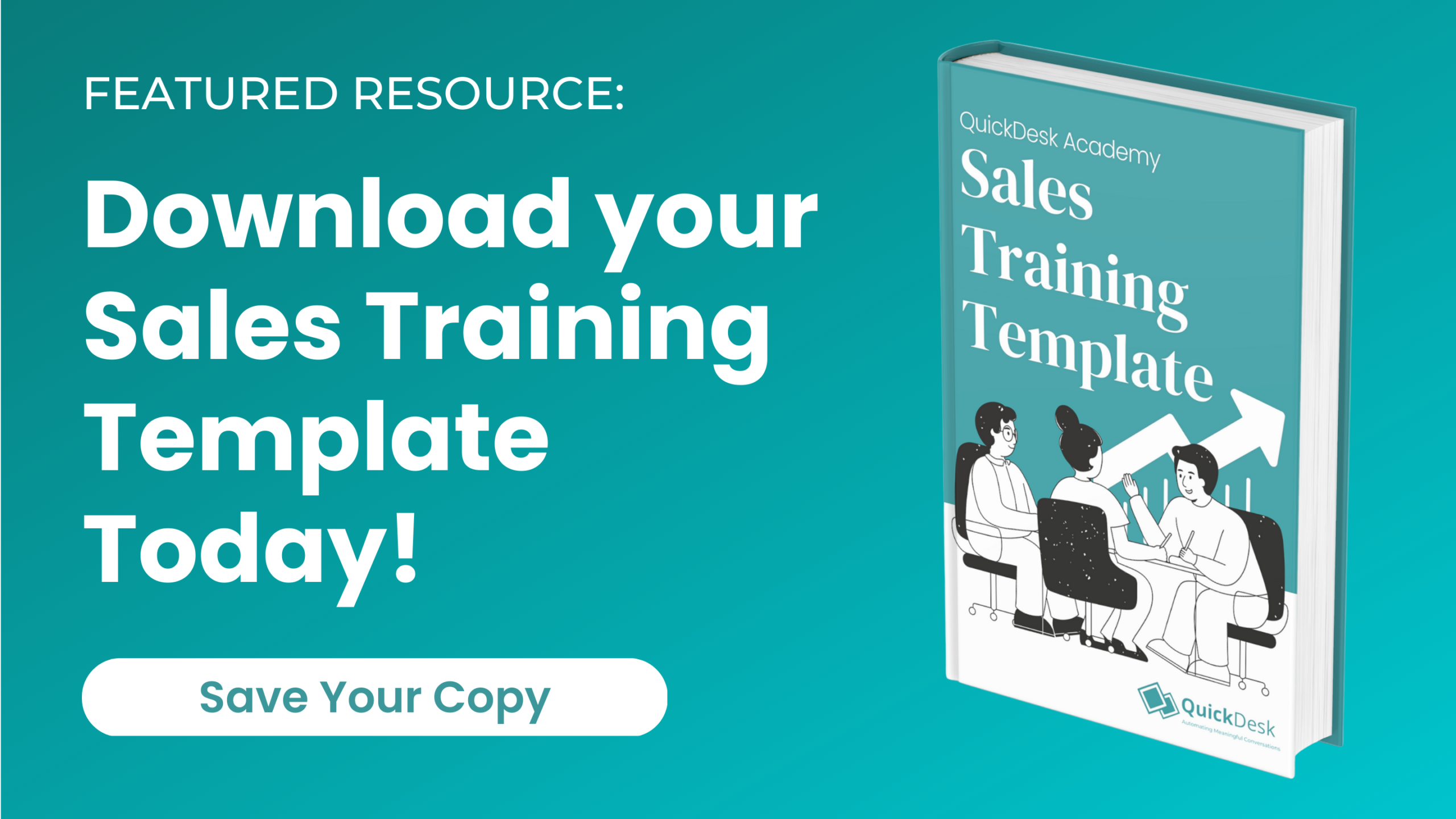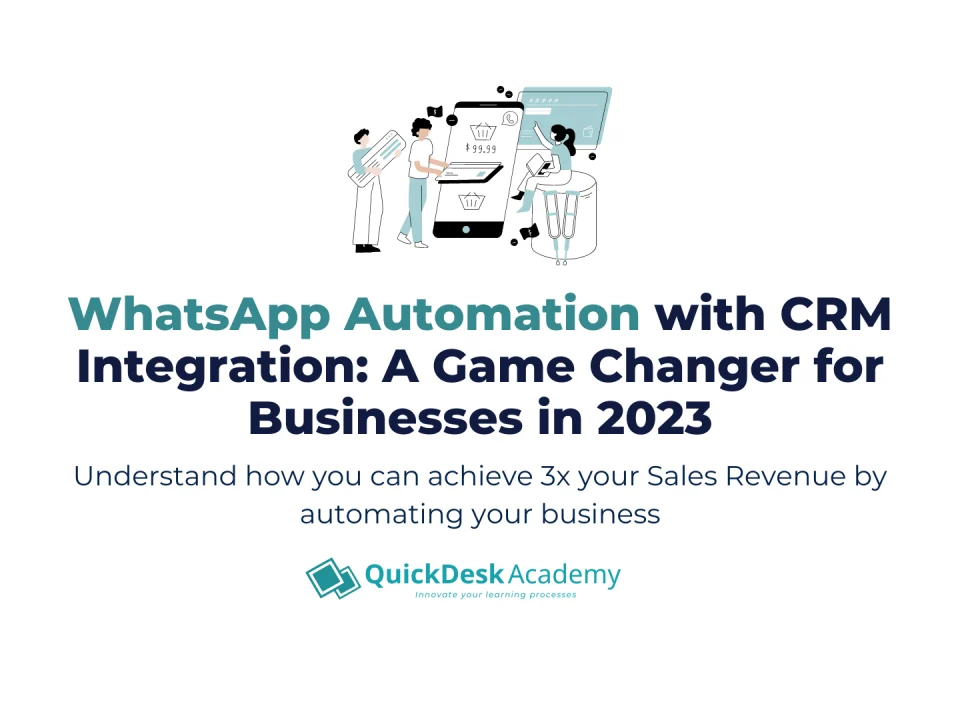How to Conduct an Effective Sales Training?

Why You Should Keep Your Business Technology Up To Date?
November 22, 2022
A Day in the Life of a Successful Salesperson
January 4, 2023How to Conduct an Effective Sales Training?
Author: QuickDesk Academy Team | Reading time: 4 minutes
Published date: 20th December 2022, 15.38 (MYT)
Before going into the detail, you can click if you wish to go directly to a certain point:
Reading Topics:
1. Onboarding your salespersons 101
c. Early Performance Evaluation
2. Conducting a sales training
a. Align with the vision and mission of the company
c. Conduct consistent training with microlearning enabled
1. Onboarding your salespersons 101
As a Learning and Development specialist or a sales manager, you know the importance of having a solid onboarding process. Briefly, it’s all about helping your new hires quickly get up to speed so they can begin making calls and sending emails right away.
So what does this look like?
Let’s break it down into four steps:
a. Onboarding Handbook
An onboarding workbook helps new hires get familiar with everything about their new job, including what you expect from them on a day-to-day basis and their goals for the next 90 days (or whatever time frame works best for your company). Moreover, it also helps them create action plans for their first couple weeks at work to feel prepared when they start working full-time. Finally, an onboarding workbook helps everyone get aligned around expectations and goals—and ensures there isn’t any confusion around roles or responsibilities between managers or supervisors.
Recommended Resource: Free Sales Training Template
No matter how you train your salespeople, use this free sales training template to track all your goals and progress. Download here for free today!
b. 90-Days Buddy ― Believe me, everyone needs a buddy
Did you know? Microsoft found that new hires that met their “buddy” more than eight times in their first 90 days have increased their productivity rate by 97%. According to the Project Management Institute (PMI), the “buddy system” is one of the onboarding methods commonly used to pair the new hire with an existing employee for the first few weeks or months.
You can’t just throw your new sales trainee into the deep end and expect them to swim. They need a buddy. Through all the ups and downs of being in sales, someone who’s been there before knows how to help them find their way and make sure they’re putting their best foot forward from day one. In addition, you want someone to help you keep them accountable for learning as much as possible during that first critical 90 days.
In this case, the new hire may have the same concerns or questions that their buddy used to have. Well, lucky for them! Their buddy already knows the answers! This allows a smoother transition in the onboarding session, where the buddy can respond directly to them while drawing on their real-life experience throughout their journey in the company. So, the cycle goes on again and again.
c. Early Performance Evaluations
As a Learning & Development (L&D) specialist, knowing the new hire’s performance is crucial before conducting training. Early performance evaluations are actually one of the most effective tools for onboarding new hires is our early evaluation process! According to Forbes, this allows you to assess their value and cultural alignment with your company, work ethics, talents, and adaptability. Therefore, these evaluations are an excellent start to enabling your sales team to transition smoothly and make their professional experience more meaningful and less intimidating.
d. Personalised Training
Salespersons are different—and they learn differently, too!
When it comes to onboarding, you must use various methods to help each individual learn as effectively as possible. For example, some people might benefit from reading an ebook or watching videos; others may prefer hands-on learning or even interactive exercises; others might need something more creative like a game or simulation.
Why bother teaching the same thing your employee learned with the “old” ways?
Well, let me introduce you to QuickDesk Academy! QuickDesk Academy provides hands-on, personalised learning and in-house coaching too! So, isn’t this the one you’ve always wanted? Personalised courses and hands-on experience allow your salesperson to apply their knowledge to their job.
2. Conducting a sales training
No matter if you’re a Learning and Development specialist or a sales manager, it’s easy to get spellbound in your work routine when you have to take care of the training needs of different departments or sales quotas to meet.
No worries, we understand and got you covered. In this article, we’ll explore the three simple tips to guarantee your new hire, and existing employee has a smooth flow into their new position:
a. Align with the vision and mission of the company
All training efforts should be tied to specific business outcomes. Before deciding on any type of training, your part is to ensure that all of the training addresses the skill needed that aligns with the company’s vision and mission.
b. Motivation is key
“Motivation will almost always beat mere talent.” ― Norman Ralph Augustine
Motivation is a fundamental need for every salesperson to succeed. What is the purpose? What is the goal? Finding motivation and aligning the end goal is a starting point for a successful team.
Well, here’s a tip from me that you can hang on to, “The purpose of being a sales professional is to facilitate people in discovering and resolving their hidden challenges. Not just selling.”
c. Conduct consistent sales training with microlearning enabled
“Only repetition with a goal in mind can truly lead to mastery. Sometimes you can keep rehearsing without learning anything new.” ― Mwanandeke Kindembo
A short training can be conducted daily, allowing your team to learn one or two new skills within the next week. A “short” training doesn’t mean 1 hour; It could be 7 minutes or less. This micro-training can be blended with role-playing scenarios, live workshops, and on-the-job observations! Repeat the process once a week, and your sales team will become the best closer in town.
That is why your sales team needs consistent micro-training daily to allow your team to grow and learn 1-2 new skills each week.
Remember, repetition is key.

Share this post if you find it insightful!
Consult with us today!
Sales teams that want to make sales require the appropriate training regardless of the industry or company size. To win, your sales team must be equipped with knowledge and skills.
Get started with training and empowering your sales team today!






